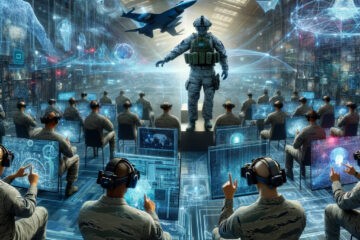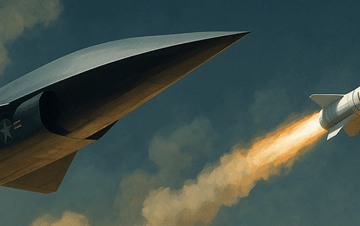The main concern regarding Russian nuclear capabilities is twofold:
- The strategic relationship between China and Russia, which involves close collaboration on defense-industrial issues, potentially enabling Russia’s military operations and posing a challenge to global security.
- The potential undercounting of Russian strategic and non-strategic nuclear forces, which could lead to a misunderstanding of the true extent of the Russian nuclear threat, impacting U.S. nuclear policies for deterrence and arms control.
10 Key Points from the ICBM EAR July 26 report:
- Strategic Synergy between Russia and China:
- Russia and China are conducting joint military exercises, raising concerns about the strategic balance and prompting calls for a more balanced approach from the Pentagon.
- Undercounting of Russian Nuclear Capabilities:
- There are concerns about the undercounting of Russian nuclear forces, which could misinform U.S. nuclear policy and deterrence strategies.
- Deterrence and Hard Power:
- H.R. MacMaster emphasizes that hard power, rather than sanctions or intelligence declassification, is crucial for deterrence, especially in the context of Russia and China’s aggressive postures.
- U.S. Nuclear Stockpile:
- The U.S. nuclear stockpile is reported to be 3,748 warheads, significantly lower than previously estimated, affecting strategic planning and potential buildup decisions.
- International Security Paradigm:
- Increasing cooperation among Russia, China, North Korea, and Iran poses a significant threat, reminiscent of historical alliances that sought to counter Western influence.
- China’s Strategic Objectives:
- China’s goals include resisting, reducing, and replacing U.S. power, reorganizing the world order, and pushing back against U.S. influence, particularly through leveraging Taiwan and financial resources.
- Sentinel ICBM Program Cost Increases:
- The Sentinel ICBM program faces significant cost overruns, with Northrop Grumman being partially blamed. The Pentagon may consider opening parts of the program for new competition to control costs.
- Nuclear Risk and Modernization:
- The threat of nuclear war is becoming more prominent, with increased nuclear modernization efforts by the U.S., China, and Russia, alongside Russia’s aggressive nuclear posturing.
- Space Force and Nuclear Threats:
- The Space Force is evaluating how to protect its missile-tracking satellites from nuclear threats, given the advancements in hypersonic missiles and anti-satellite weapons by Russia and China.
- Geopolitical Tensions:
- The global geopolitical landscape is marked by the growing alignment of authoritarian states against the West, highlighting the need for robust deterrence and strategic planning to counter these threats.
These points underscore the increasing complexity and dangers in global strategic dynamics, particularly concerning nuclear deterrence and the evolving alliances among major powers.
Get full insider details you can’t get anywhere else!
About the Author

Peter Huessy
Mr. Peter Huessy is President of his own defense consulting firm, Geostrategic Analysis, founded in 1981, and through 2021, Director of Strategic Deterrent Studies at the Mitchell Institute on Aerospace Studies. He was the senior defense consultant at the National Defense University Foundation for 22 years. He was the National Security Fellow at the AFPC, and Senior Defense Consultant at the Air Force Association from 2011-2016.
Mr. Huessy has served as an expert defense and national security analyst for over 50 years, helping his clients cover congressional activities, arms control group efforts, nuclear armed states actions, and US administration nuclear related policy, budgets, and strategies, while monitoring budget and policy developments on nuclear deterrence, ICBM modernization, nuclear arms control, and overall nuclear modernization.
He has also covered nuclear terrorism, counterterrorism, immigration, state-sponsored terrorism, missile defense, weapons of mass destruction, especially US-Israeli joint defense efforts, nuclear deterrence, arms control, proliferation, as well as tactical and strategic air, airlift, space and nuclear matters and such state and non-state actors as North Korea, China, Iran, Syria, Venezuela and Hezbollah, Hamas, and Al Qaeda. This also includes monitoring activities of think tanks, non-governmental organizations, and other US government departments, as well as projecting future actions of Congress in this area. His specialty is developing and implementing public policy campaigns to secure support for important national security objectives. And analyzing nuclear related technology and its impact on public policy, a study of which he prepared for the Aerospace Corporation in 2019.





I would like to hear more discussions regarding the endurance of the current legacy nuclear deterrent systems weighted against the nuclear modernization projects that are falling behind schedule and over budget.